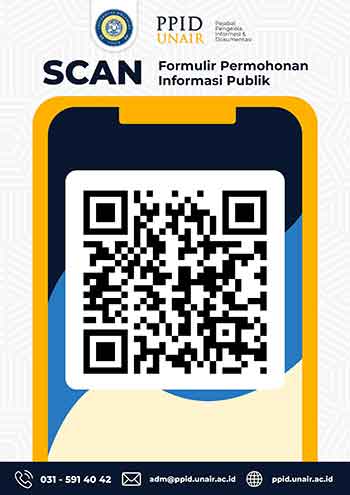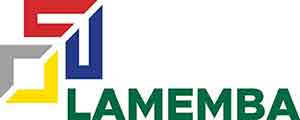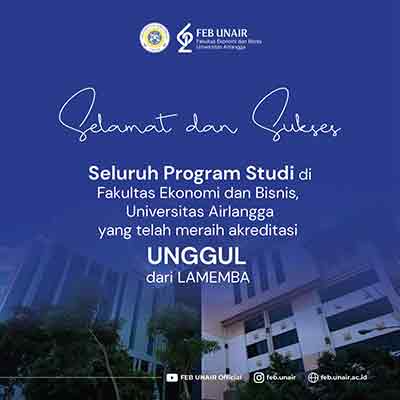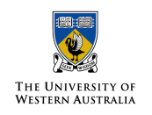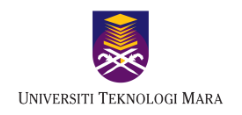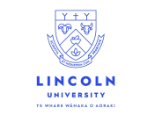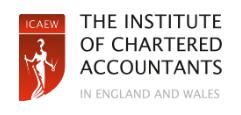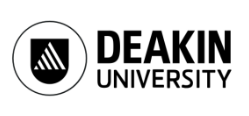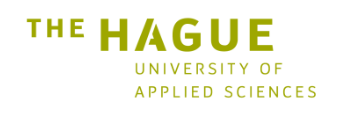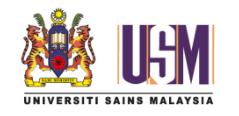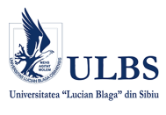FEB Unair History

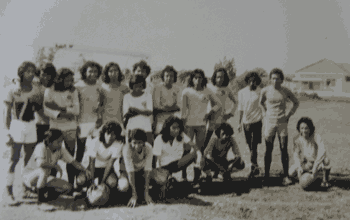 It started with the idea of Indonesian students in Rotterdam, Netherlands, including Fadjar Notonagoro, Sumitro and friends who wanted to establish an economics college upon their return to Indonesia. At that time there was not a single economics college in Indonesia, so to study economics you had to go abroad. Around 1952/1953 an economic college was established in Surabaya with the name Krisnadwipayana Economic College which was founded by dr. Ong Eng Djie (he is the Minister of Finance of the Republic of Indonesia).
It started with the idea of Indonesian students in Rotterdam, Netherlands, including Fadjar Notonagoro, Sumitro and friends who wanted to establish an economics college upon their return to Indonesia. At that time there was not a single economics college in Indonesia, so to study economics you had to go abroad. Around 1952/1953 an economic college was established in Surabaya with the name Krisnadwipayana Economic College which was founded by dr. Ong Eng Djie (he is the Minister of Finance of the Republic of Indonesia).
A year and a half later, due to some reasons, the college had to disband. With such great aspirations to study, former PTE student Krisnadwipayana went to the governor of Samadikoen asking for help to continue their Alma Mater march. At that time there were only 100 economists, 15 of whom were in East Java out of 84 million people in Indonesia. Obviously very little is associated with preparation for economic development.
Against the background of the above conditions, at the suggestion of Governor Samadikoen, and the encouragement of former students of the Nederlandsche Economische Hogeschool Rotterdam (NEH Rotterdam), then on January 1, 1954 the Foundation for Higher Education Economics was established in Surabaya. The establishment of the foundation on the basis of a notarial deed Mr.Drs. Liem Hie Hian dated July 22, 1954. The names of the founders of the PTES Foundation as stated in the deed of establishment:
• Mas Goenadi Widjoasmoro, Head of Surabaya Financial Inspection.
• Liem Djing Lioe, Agent Oei Tiong Ham Concern.
• Raden Mas Soeparto, Resident of Surabaya.
• Machmudin Gaffar, Head of Bond Importeur Indonesia.
• Soewarimbo, Head of Bank Rakyat Indonesia.
• Sheh Kuo Shen, Chairman of Chung Hua Chung Hui.
• Dietvors, Chairman of Middenstandsvereniging.
The Board of Trustees of the Foundation was first chaired by Mr. RM Soeparto, the Resident of Surabaya at that time and the founder of the foundation and continued by the next Resident, namely R. Ngabehi Soebekti. In the deed of establishment YPTES stated the objectives (article 2), among others:
1. Holding economic colleges.
2. Provide education to become economists with high quality and international quality.
On September 15, 1954, the opening ceremony of the Surabaya Economics College (PTES) was held in the hall of the Faculty of Medicine, Universitas Airlangga. The event was attended by the Board of Trustees of the Foundation, the Board of Curators which was chaired for the first time by Commodore (Sea) Mohamad Nazir who later became Minister of Shipping of the Republic of Indonesia. The Navy of the Republic of Indonesia (ALRI) was deliberately involved, partly because Surabaya is a very dominant naval city. Komt tijd komt verbetering, implementation first and implementation later, that's the slogan at the beginning of the PTES step. This is because they realize the reality where the facilities are minimal, but it is the spirit that always inspires.
Lectures were held in the afternoon by borrowing the Bahari Building (now Tunjungan Plasa), the Agrarian/BPN building on Jalan Tunjungan and one of the rooms in the Faculty of Medicine, Airlangga University. Lectures can be held at the Faculty of Medicine, Universitas Airlangga because of the help of Prof. Toha (gynecologist) who at that time became the Board of Trustees of the PTES Foundation. The PTES office at that time was on Jalan Arjuno and Jalan Progo.
At the time of its establishment, PTES only opened one department, namely Corporate Economics. This was adjusted to the expertise of the existing lecturers at that time. While the new strata baccalaureate level. Even though there is only one department, there is a strict specialization in lectures, because general economics courses support each other with corporate economics courses.
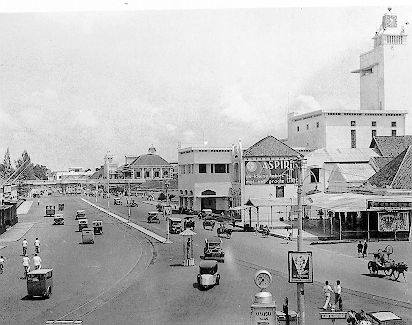 On November 17, 1957, a collaboration was held with the Faculty of Economics, University of Indonesia in Jakarta regarding educational programs and adjustments, because previously PTES was still imitating the NEH Rotterdam curriculum system. Since then, the Department of General Economics has been pioneered. Furthermore, PTES also collaborated with UGM.
On November 17, 1957, a collaboration was held with the Faculty of Economics, University of Indonesia in Jakarta regarding educational programs and adjustments, because previously PTES was still imitating the NEH Rotterdam curriculum system. Since then, the Department of General Economics has been pioneered. Furthermore, PTES also collaborated with UGM.
In addition to cooperation with domestic universities, PTES has been able to establish international relations with NEH Rotterdam and a University in the Philippines. PTES has also been asked for assistance by the Regional Head of Kalimantan to establish an Indonesian Commerce Academy in Jakarta. Since then, the PTES lecturers have been partially assigned to the Academy, which was later known as Lambung Mangkurat University.
Actually, at the beginning of the establishment of the PTES Foundation, the administrators had submitted an application to the President of the Republic of Indonesia so that PTES was immediately included in the Airlangga University environment. However, due to various reasons, the process has stalled, including because there is no law on higher education so that the procedures that must be followed are not clear.
The next struggle was spearheaded by R. Samadikoen, Soewondo, and Wilono (former governor of Kalimantan who later became Regional Head of East Java), President Director of Bank Rakyat Indonesia and Commander of the Navy.
Thanks to a very persistent struggle, finally the Decree of the Minister of Higher Education and Science No. 31/1961 on August 8, 1961 which stipulates that since September 1, 1961 PTES has changed to the Faculty of Economics, Universitas Airlangga.
Education programs
At the beginning of becoming the Faculty of Economics, Universitas Airlangga (FE UA), the available majors continued with PTES, namely the Department of General Economics and Corporate Economics. The Accounting Department was only opened in 1963. In the opening of the Accounting department, FE UA received the assistance of lecturers from the University of Indonesia.
In order to assist the government's program for the education of high-level skilled workers, FE UA established a non-degree program for the first time in the form of Corporate Administration Expert Education (PAAP) based on the Decree of the Minister of Education and Culture No. 042/U/1975 dated March 18, 1975. The program was first opened to only hold accounting majors and starting from the academic year 1984/1985 plus the Department of Taxation and Department of Marketing Management was held starting the academic year 1985/1986. PAAP management which was originally separate, since 1985/1986 has become one as a D3 program from the Faculty of Economics, Airlangga University.
Meanwhile, to meet the needs of the community for graduates majoring in Accounting and Management Department which cannot be fulfilled through regular programs, the Decree of the Director General of Higher Education of the Ministry of Education and Culture no. 278/DIKTI/Kep/1993 dated May 10, 1993, an extension program was opened with the major in Accounting and Management.
The Parallel D3 Program was opened in 1995/1996. The study programs carried out in the Parallel D3 program consist of Accounting, Taxation, Marketing Management, Banking Management, Hospitality Management, and Office Management.
In 1996, in accordance with the provisions of the Government, accreditation was carried out for both public and private universities by the National Accreditation Board (BAN). At the beginning of the accreditation, the Department of Development Studies, Management and Accounting received B accreditation. This spurred the enthusiasm of education providers at FE UA to improve their performance, so that in 2000, the accounting and development studies majors could be upgraded to A.
Education Implementation
As at PTES, the implementation of education at FE UA was initially organized with a package system, which consisted of 6 levels. There are preparation levels I and II, baccalaureate I and II, doctoral level I (S1) and doctoral level II (S II). To advance from one level to another, a student must pass all the courses offered. With this pattern of education, it is quite difficult for students to immediately complete their studies. At that time the Drop Out policy was only applied to students before the baccalaureate, so that at that time most students after the baccalaureate were already looking for work so that their studies were neglected.
In 1979 there was a transition of the academic year, which originally started in January was changed to July, so at that time the designation of the academic year was changed to 1979/1980. That year was also a transition year, the transition from the Package System to the Semester Credit System. An education administration is divided per semester and a student who does not pass a course only needs to repeat the course in the next semester. Students no longer need to repeat courses that have been passed except to improve grades. The existence of these changes accelerated the completion of student studies, so that in 1985, a student from the 1981/1982 class, Ms. Lindawati Gani, successfully completed her studies in less than 4 years.
Based on the decision of the Consortium for Economics of the Ministry of Education and Culture in its meeting in October 1979, FE UA changed the name of the department:
The Department of General Economics became the Department of Development Studies.
The Department of Corporate Economics became the Department of Management.
At the beginning of the credit, new students are not directly assigned. After 4 semesters, you will enter the Department of Management, Accounting or Development Studies. In 1984, a concentration of courses was started for the Department of Management and Development Studies.
Since 1988, new students through the selection of the State Higher Education Entrance Examination (UMPTN) are directly assigned, there is no longer any pre-major admission. To provide opportunities for students who want to accelerate their studies, since 1988, Short Semesters have been held.
Facilities and infrastructure
As when he was still at PTES, the beginning of FE UA lectures were carried out in several locations, namely the Bahari Building, the BPN (Agrarian) Building and at the Faculty of Medicine, Airlangga University (Ruang Propadeus). Starting in 1962, FE UA was able to use the Airlangga University Student Meeting Building on Jalan Tegalsari which was guarded faithfully by Mr. Djoened. Apart from the four places mentioned, the lecture was also held at the Rajasa Building, Jalan Gentengkali.
Lectures in several locations lasted until 1967. Starting in 1967, in addition to the Student Meeting Hall on Tegalsari Street, lectures began to be held at the FE UA Building on Airlangga 4 road which at that time was still used together with the Faculty of Law. The building is Airlangga University's first building on the South campus. At that time, there were only seven rooms available for FE UA. In 1982, the rectorate provided a building for the Faculty of Law, while the building for the Faculty of Economics was under construction. After the Faculty of Law moved to a new building (as is the current position), the Faculty of Economics used all the available rooms in the building so that FE UA had 13 rooms. Although FE UA has provided a new building, in order to maintain the historical value of the old building, the leadership at that time decided to stay in the old building and consequently had to make some repairs because the building had suffered a lot of damage.
Since 1982 the Tegalsari building is no longer used, all FE UA activities, both lectures, administrative activities and student activities are carried out on Airlangga 4 street.
Improvements continue to be made so that the face of the FE UA building is as it is today. Funds for repairing / beautifying the FE UA building apart from being obtained from the Level I Regional Government, alumni, were also obtained from the Student Parents Association (IKOMA) Faculty of Economics, Airlangga University.
Due to the large public interest in the FE UA extension program, the existing room capacity is no longer adequate. For this reason, in 1996, with funds from IKOMA, the FE UA extension building was built. This building is entirely for FE UA extension activities, both for lectures and administration activities.
In May 2000, based on the desire of the FE UA leadership at the time to carry out an educational program that 'links & matches' with the business world, the Academic Business Center building was built. The building was built next to the FE UA building, 8 floors and was inaugurated on April 15, 2001.
To support academic activities among students, supporting facilities are needed. For this reason, a Computing Laboratory with a capacity of 24 units has been provided. The computational laboratory is to provide students with computer skills. In addition to the computing laboratory, in 1998, 10 units of internet facilities and CD-rom were provided. As is known, the rapid development of technology must also be followed by FE UA students so that these facilities are provided. With the establishment of the Airlangga University Central Library on Jalan Dharmawangsa Dalam, all FE UA library activities have also moved there. To keep providing books and scientific papers needed by FE UA students, a reading room is provided. In this room provided a place to read books and written works.
The number and use of rooms in FE UA at this time have undergone various changes. The lecture hall still occupies the previous place, as many as 13 rooms. One of the lecture halls on the north 2nd floor has been renovated into the Fadjar Notonagoro KRT Room. The Gondowardoyo Seminar Room has been turned into the KRMT Tirtodiningrat Room which is often used for trainings and workshops. The leadership room has not changed, and now a leadership meeting room has been built above the leadership room between the 1st and 2nd floors. The administration room remains as before, in the northern part of the building.
The Department and Study Program rooms remain in their original position, in the middle of the FE UA building and now there are two rooms for exams. The lecturer room which was previously in the middle of the building (in the 1980s) is now in the south (the former Computing Lab room). Given the increasing number of lecturers, the lecturer's room was expanded. With the increasing number of professors, a separate room is also provided. Previously the professor's room when the late Prof. Miendrowo, which was located in the middle of the building, is now in the south, next to the lecturer's room. The Doctoral Room still occupies the previous place, as many as nine rooms.
The increasing number of institutions in FE UA also raises the need for space. The P3M room has not changed (in the middle). Actually, the PMP and Taxation Building has been built, but because the new Master of Management program has its own building, the building is now used by the MM program. The Center for Accounting Development has its own building which was built from World Bank grants.
Supporting facilities needed by students are provided in the middle of the building, namely internet & CD-Rom facilities, computing laboratories, and reading rooms. In the reading room provided a comfortable place to read. The book fair remains in its original place, while the Dharma Wanita Canteen is provided in the southern part of the FE UA building.
On the 1,5th floor, the center of the building is provided with a room for the Student Press Institute. Meanwhile, the place for student organizations, namely the Student Executive Board, the Student Legislative Body and the Department of Student Association, is provided with the Krida Student Building which is built on two floors.
The extension building for undergraduate and parallel D III students was built on Jalan Sri Ikana. The building is one of the rooms used for the Bank Muamalat Cash Office. There are 1 lecture halls and a hall, there is also a Banking Laboratory, Hospitality Laboratory, Language Laboratory. In addition, there is also a business center, leadership room, department room, lecturer room, comprehensive exam room, and administration room and canteen.


